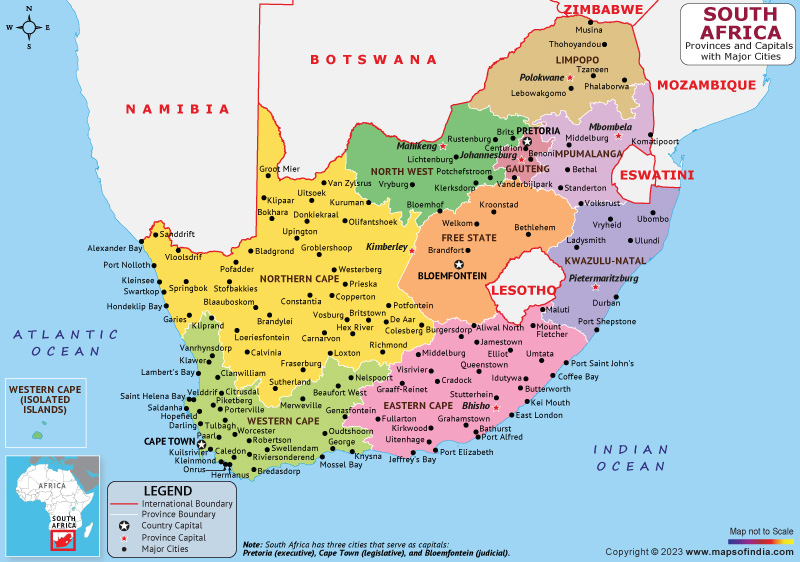Africa's southernmost nation is called South Africa, or the Republic of South Africa (RSA). After Tanzania, it is the most populous nation entirely south of the equator and the southernmost nation on the Old World continent. With its distinctive biomes, plant life, and animal life, South Africa is a biodiversity hotspot. The nation, which has a population of over 60 million and a land area of 1,221,037 square kilometers, is the 24th most populous in the world.
There are three capital cities in South Africa, and Pretoria, Bloemfontein, and Cape Town serve as the locations of the executive, judicial, and legislative branches of government, respectively. Johannesburg is the largest city.
History:
South Africa's history is lengthy and intricate, influenced by a variety of political, social, economic, and cultural factors. Following is a quick rundown of some significant occasions and advancements:
Pre-colonial Period: Several indigenous peoples lived in South Africa before European settlers arrived.
Colonialism: Over time, the British and other European powers also established their colonies in the area, resulting in clashes with the native population.
Apartheid: in the middle of the 20th century, a policy of segregation and discrimination based on race was widespread.
Liberation and Resistance: The resistance took many different forms, such as nonviolent protests, civil disobedience, and armed conflict.
Democracy: In the 1990s, negotiations between the ruling party and the opposition resulted in Nelson Mandela's release from prison in 1994 and the installation of a democratic government. South Africa has since made great strides toward redressing historical wrongs and creating a more equitable society.
Culture:
Africa's culture is diverse and multifaceted, encompassing a variety of nations and tribes, each of which has a distinctive characteristic that is specific to Africa. Ethnic and cultural diversity are well-known features of South Africa. The majority of people who live in rural South Africa's black community are extremely poor. Most people have a better quality of life, and culture and the arts, which were occasionally forced into exile, are thriving in the postapartheid era's free environment.
Language:
South Africa's official languages are English, Afrikaans, and nine ethnic tongues. The language of official business and commerce, English, is the most widely used.
Geography:
With a long coastline spanning more than 3000 km, South Africa occupies the southernmost tip of Africa. Its long coastline extends from the desert border with Namibia on the Atlantic coast southward around the tip of Africa, then turns north to the border of subtropical Mozambique on the Indian Ocean. The surface area of South Africa is 1 219 602 km2, and it stretches from 22°S to 35°S latitudinally and from 17°E to 33°E longitudinally.
| Official name | Republic of South Africa |
| Capital | Pretoria, Bloemfontein, and Cape Town |
| Population | 5.94 crores |
| Area | 1.22 million km² |
| Currency | South African rand |
| Religion | Christian |
| Language | English |
| Major Cities |
FAQs
Q1.What is the official language of South Africa?
English is the official language of South Africa
Q2.What is the capital of South Africa?
Pretoria, Bloemfontein, and Cape Town is the capital of South Africa
Q3.What is the currency of South Africa?
South African rand is the currency of South Africa
Q4.What is the climate in South Africa?
With an average monthly temperature range of 22°C to 11°C, South Africa's mean annual temperature is 17.5°C.
Last Updated on: April 19, 2023
